There was something special about television in the 1970s. Before the era of hundreds of channels, streaming services, and constant digital distractions, TV personalities became genuine fixtures in our homes. We invited them into our living rooms several times a week, sometimes daily, creating bonds that felt surprisingly personal and enduring. These weren’t just entertainers passing through our lives—they were reliable presences who, over time, began to feel like extended family members. They celebrated holidays with us, shared their wisdom, made us laugh, and offered comfort during difficult times.
1. Walter Cronkite
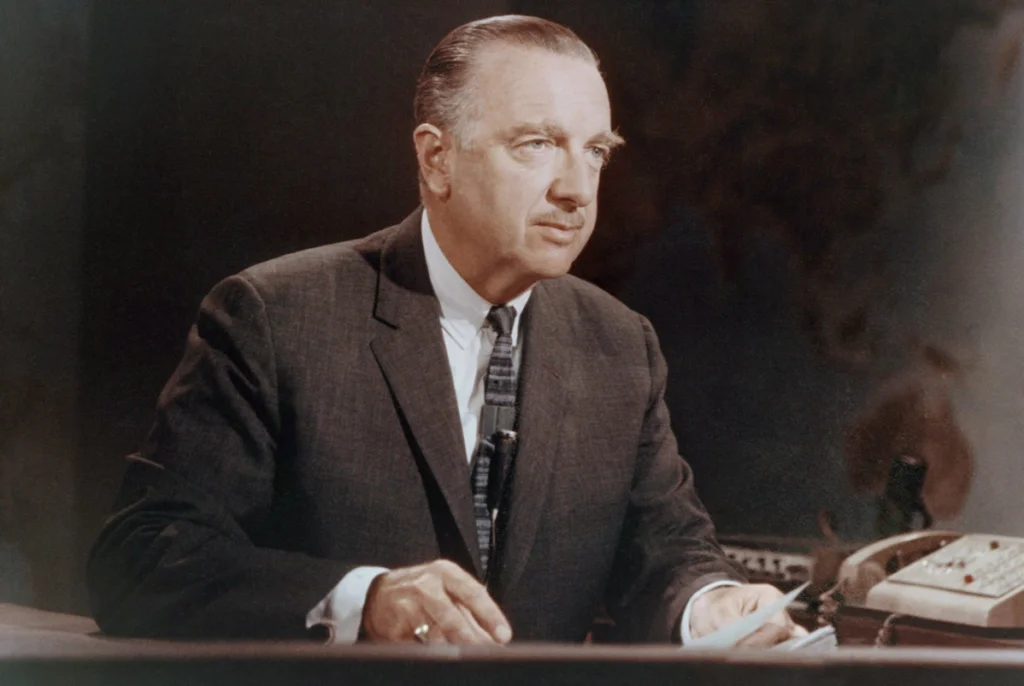
As anchor of the CBS Evening News from 1962 to 1981, Walter Cronkite wasn’t just a news reader—he was “the most trusted man in America,” a title earned through his unflappable demeanor and straightforward delivery during some of the nation’s most turbulent moments. Whether announcing the assassination of President Kennedy with tears in his eyes, expressing wonder at the moon landing, or delivering the sobering realities of the Vietnam War, Cronkite became America’s father figure, guiding us through history with integrity and compassion. His signature sign-off—”And that’s the way it is”—wasn’t just a catchphrase but a reassurance that, even during uncertain times, we had someone trustworthy helping us make sense of a chaotic world. Several years ago, CBS News celebrated Cronkite’s legacy on what would have been his 100th birthday.
For millions of Americans, dinner time meant sitting down with Walter, whose authoritative yet kind presence lent gravity to good news and comfort during tragedies. When Cronkite expressed his personal opinion that the Vietnam War was unwinnable—a rare departure from his strictly objective reporting—President Johnson reportedly remarked, “If I’ve lost Cronkite, I’ve lost Middle America,” understanding the profound connection viewers felt with the anchorman. Though modern audiences might find his pace deliberate and his style reserved compared to today’s flashier news presentations, Cronkite’s enduring legacy reminds us of a time when news anchors were selected for their trustworthiness rather than their entertainment value—and perhaps explains why no modern anchor has achieved quite the same universal “family member” status in American households.
2. Carol Burnett
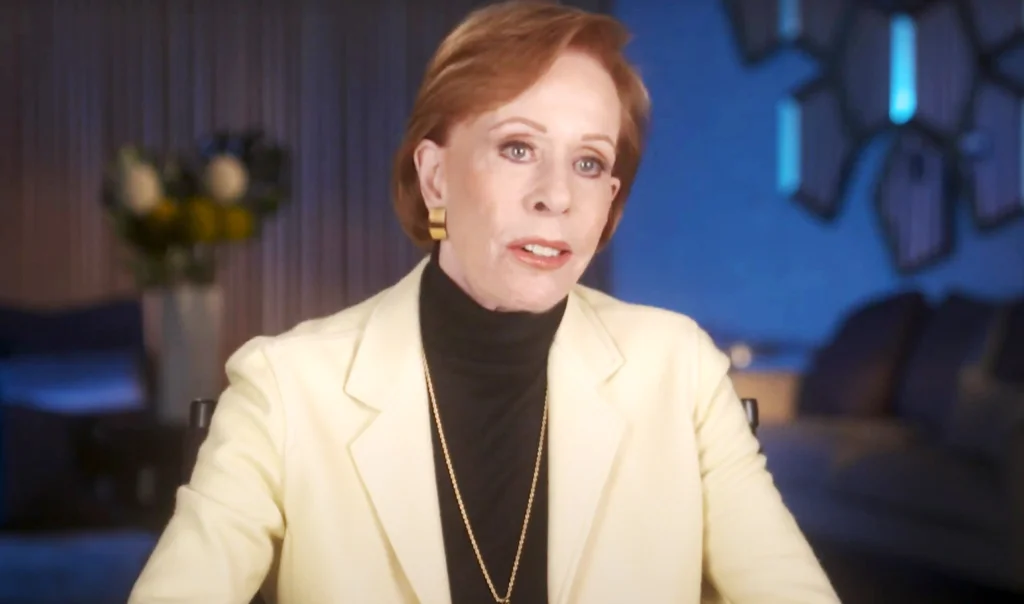
Every Saturday night from 1967 to 1978, Carol Burnett invited us to her variety show with a warmth and authenticity that made her feel less like a Hollywood star and more like a fun aunt hosting the family gathering. The show’s format, which began with Carol taking unscripted questions from the audience, created an intimate connection rare in television, revealing her quick wit and genuine interest in her viewers. Her trademark ear tug at the end of each episode—a personal message to her grandmother that everything was okay—became a tender reminder of the real person behind the comedy, someone with family connections and heartfelt sentiments just like the rest of us. ABC News shared a retrospective starring Burnett as she explored her illustrious, television-defining career.
What made Carol truly feel like family was her willingness to be vulnerable, whether showcasing her remarkable singing voice in serious moments or fearlessly throwing herself into slapstick comedy without concern for glamour or image. Her ensemble cast, particularly Harvey Korman, Tim Conway, Vicki Lawrence, and Lyle Waggoner, functioned like relatives at a family reunion—their chemistry and genuine affection for one another was palpable, and their barely contained laughter during sketches (especially Conway’s deliberate attempts to make Korman break character) made viewers feel included in the fun rather than merely observing it. When CBS attempted to move the show to a different time slot to appeal to younger demographics, the outpouring of viewer loyalty was testament to how deeply Burnett had integrated herself into the American family structure—viewers simply weren’t willing to give up their weekly visit with Carol and company.
3. Fred Rogers
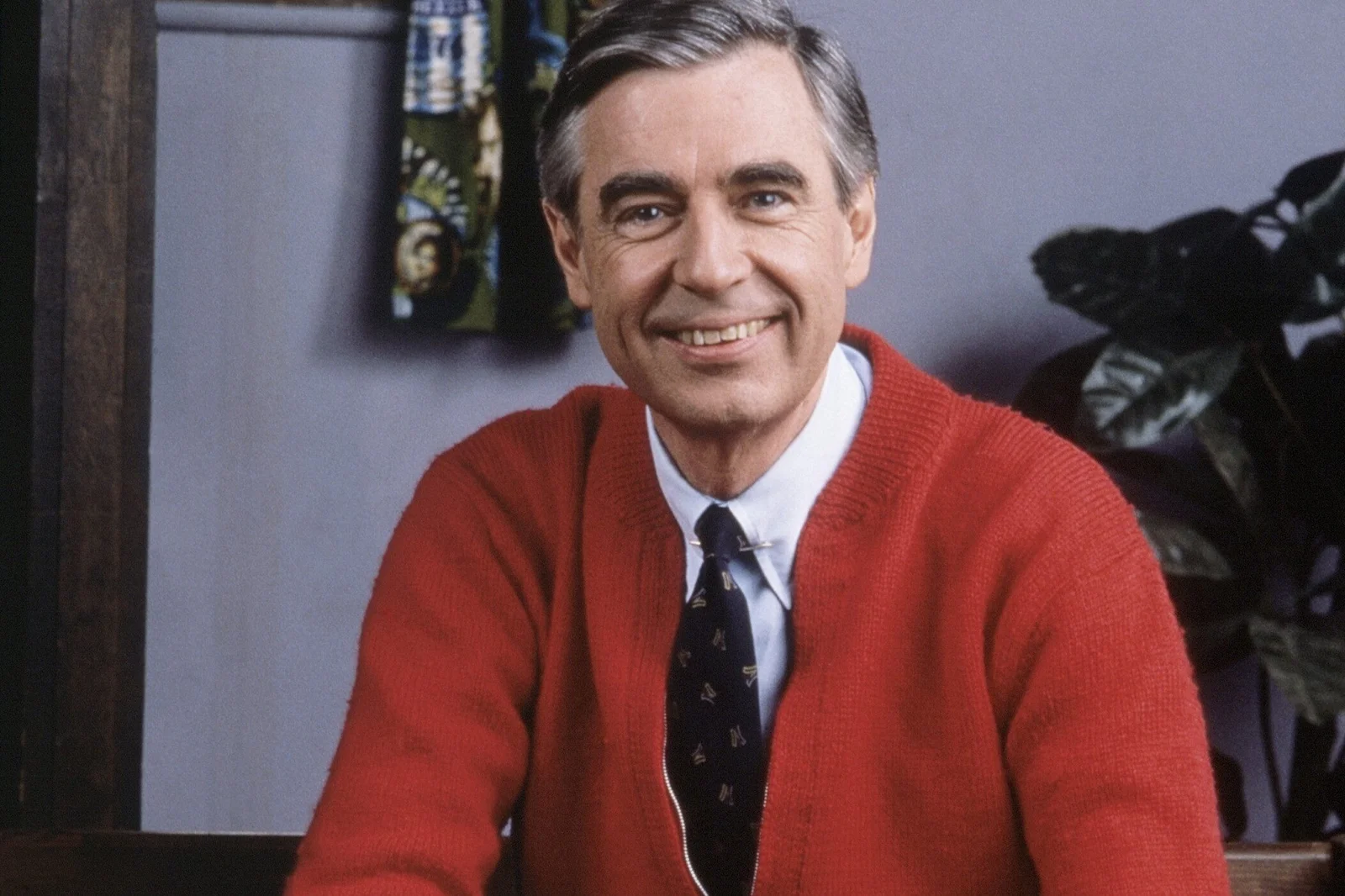
No television personality embodied the role of caring family member more completely than Fred Rogers, whose “Mister Rogers’ Neighborhood” (which began in 1968) created a space where children felt truly seen, understood, and valued. With his cardigan sweaters (each knitted by his mother), gentle voice, and unhurried pace, Fred Rogers wasn’t playing a character but authentically presenting himself—a revolutionary approach in children’s television that focused on emotional intelligence rather than entertainment. His direct address to the camera made children feel he was speaking specifically to them, creating an intimacy that multiple generations of Americans still recall with profound affection and gratitude. Psychology Today defines the work and legacy of Fred Rogers and his on-screen persona as particularly powerful.
What made Fred Rogers exceptional was his unwavering respect for children’s feelings and his willingness to address difficult topics—death, divorce, war, and racial tensions—with honesty and compassion at a level children could process. Parents came to rely on Mister Rogers as a trusted partner in raising emotionally healthy children, particularly during national tragedies when his calm, reassuring presence helped families navigate conversations about frightening events. When Rogers testified before a Senate subcommittee in 1969 to defend PBS funding, his six-minute speech about the dignity and emotional lives of children moved the initially skeptical Senator John Pastore to declare, “I think it’s wonderful…I think it’s wonderful,” a reaction that mirrored how millions of families felt about the man who had become television’s most beloved neighbor.
4. Bob Ross
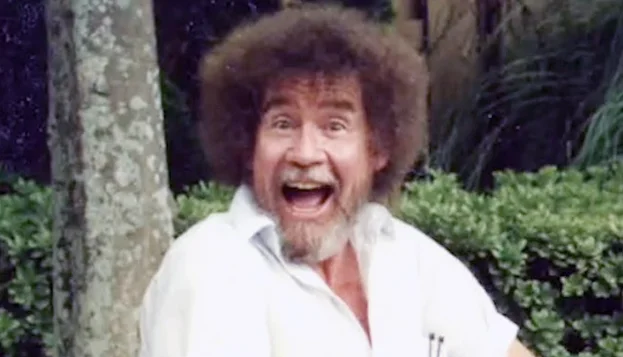
Though “The Joy of Painting” began airing on PBS in 1983, Bob Ross had been developing his soothing approach to art instruction throughout the 1970s, when he was teaching classes while serving in the U.S. Air Force. His soft-spoken demeanor, gentle encouragement, and signature permed hair made him instantly recognizable and deeply comforting—less like a formal art instructor and more like a patient uncle teaching you his favorite hobby. Ross’s famous phrases—”happy little trees,” “there are no mistakes, just happy accidents”—weren’t just painting tips but life philosophies delivered with genuine warmth that made viewers feel capable and valued regardless of their artistic ability.
What separated Ross from other instructional hosts was his understanding that many viewers would never pick up a paintbrush—they were tuning in for the calming experience of watching him create, for his soothing voice and encouraging worldview. He often shared stories about his life, his love of animals (occasionally featuring rescued squirrels or birds on the show), and his appreciation for nature, creating a multi-dimensional relationship with viewers that transcended the basic teacher-student dynamic. Though Ross passed away in 1995, his enduring popularity—including a massive resurgence among younger generations discovering him through streaming platforms—testifies to the authenticity of the connection he established, proving that the most effective television personalities are those who bring their true selves to the screen rather than performing a role.
5. Julia Child
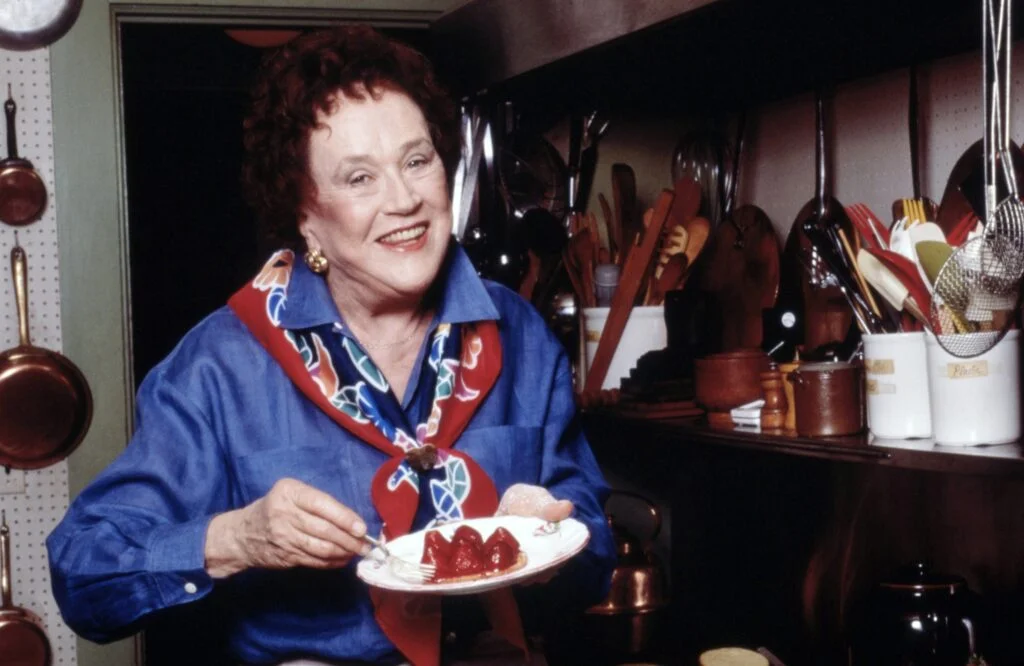
Standing six feet two inches tall with an unmistakable warbling voice and fearless approach to French cuisine, Julia Child revolutionized American cooking while becoming everyone’s favorite culinary aunt on “The French Chef,” which aired from 1963 to 1973. Her kitchen disasters—dropped food, collapsed soufflés, flaming mishaps—were left in the show rather than edited out, creating an authenticity rarely seen on television and giving home cooks permission to embrace their own imperfections. Julia’s famous quote, “Never apologize for your cooking,” wasn’t just about food but about bringing confidence and joy to the table—a philosophy that extended beyond the kitchen into viewers’ everyday lives.
What made Julia feel like family was her genuine enthusiasm, her refusal to talk down to her audience, and her conviction that anyone could master French cooking with the right instruction and a fearless attitude. Unlike the polished, perfect cooking shows that would follow in later decades, Julia’s programs featured real-time cooking with all its messiness and unpredictability, creating a sense that we were cooking alongside a knowledgeable but approachable relative rather than watching a rehearsed performance. When Child moved to other PBS shows later in her career, including “Julia Child & Company” (1978-1979), loyal viewers followed—not just for the recipes but for the continuing relationship with a woman who had fundamentally changed their relationship with food and, in many cases, their family dinner tables.
6. Dick Clark
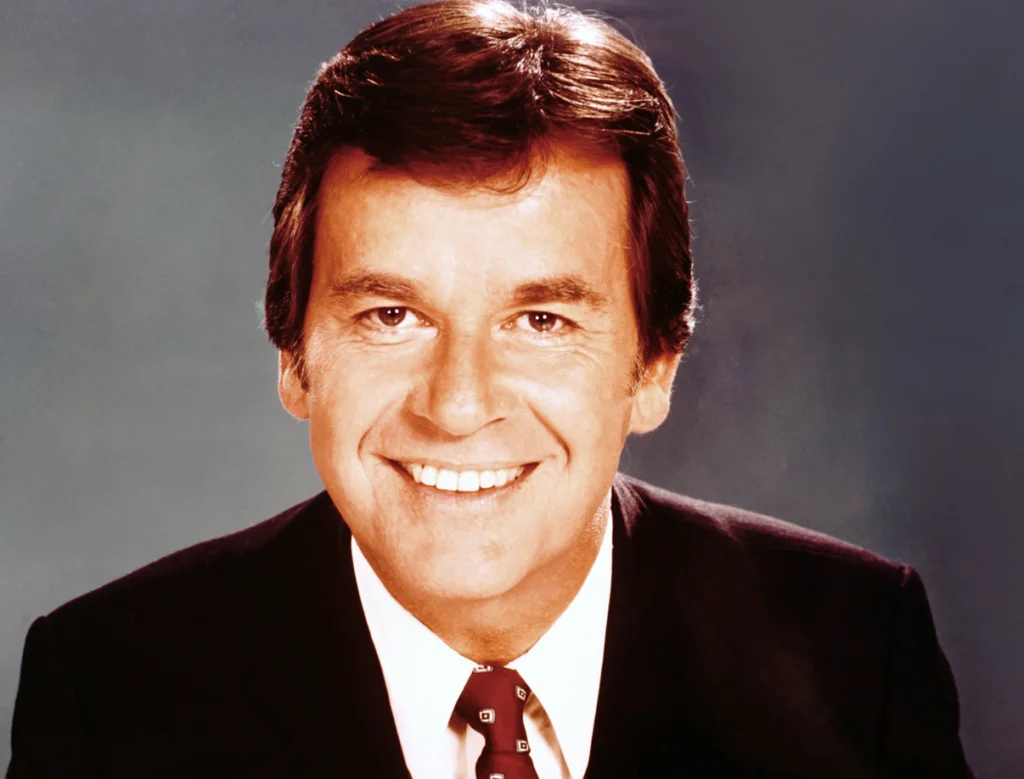
As host of “American Bandstand” from 1956 until 1989, Dick Clark was the cool older cousin who kept younger family members connected to current music trends while maintaining an approachability that parents trusted. His seemingly ageless appearance and consistently enthusiastic presentation earned him the nickname “America’s oldest teenager,” but it was his genuine respect for both the music and his young audience that made him a trusted figure across multiple generations. During the 1970s, when the music industry was exploding with new genres and pushing boundaries, Clark provided a steady hand that guided families through changing cultural landscapes while giving young artists a platform to reach mainstream America.
Clark’s expansion into other programs, particularly “Dick Clark’s New Year’s Rockin’ Eve” which began in 1972, cemented his status as a family fixture—millions of Americans literally welcomed the New Year with Dick in their living rooms, creating an annual tradition that continues even after his passing. His straightforward interview style, which treated teenage concerns with genuine interest rather than condescension, established him as a trusted interpreter between youth culture and parents, helping families navigate generational gaps during a decade of rapid social change. Unlike many youth-oriented programs, “American Bandstand” managed to be cool without being exclusionary, hip without being alienating—a delicate balance that allowed Clark to become that rare figure who appealed to both teenagers and their parents simultaneously.
7. Alex Trebek
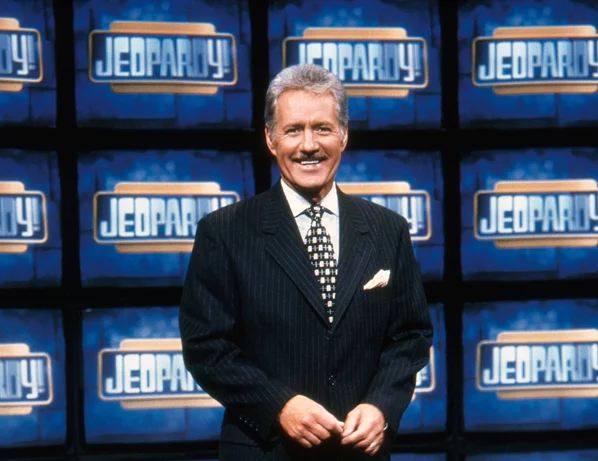
When Alex Trebek began hosting the revival of “Jeopardy!” in 1984, few could have predicted he would become one of television’s most enduring and beloved personalities, but his approach to hosting—which he developed through various game shows in the 1970s including “The Wizard of Odds,” “High Rollers,” and “Double Dare”—established him as the intellectual yet approachable uncle of American television. With his precise diction, wry humor, and evident respect for knowledge, Trebek elevated the game show format from mere entertainment to a celebration of intelligence, creating a program that families watched together not just for the competition but for the gentle education it provided across generations.
What made Trebek feel like family was his consistency, his subtle warmth beneath the formal exterior, and his ability to make contestants feel valued regardless of their performance. His trademark raised eyebrow at an incorrect response wasn’t mockery but a shared moment with viewers—a gentle acknowledgment that we all make mistakes, even when we’re certain we know the answer. Though his tenure on “Jeopardy!” would extend for 37 seasons until his death in 2020, it was during these formative years that Trebek established the approach that would make him welcome in American homes five evenings a week—a remarkable achievement in an industry known for quick burnout and fickle audience loyalty.
8. Johnny Carson
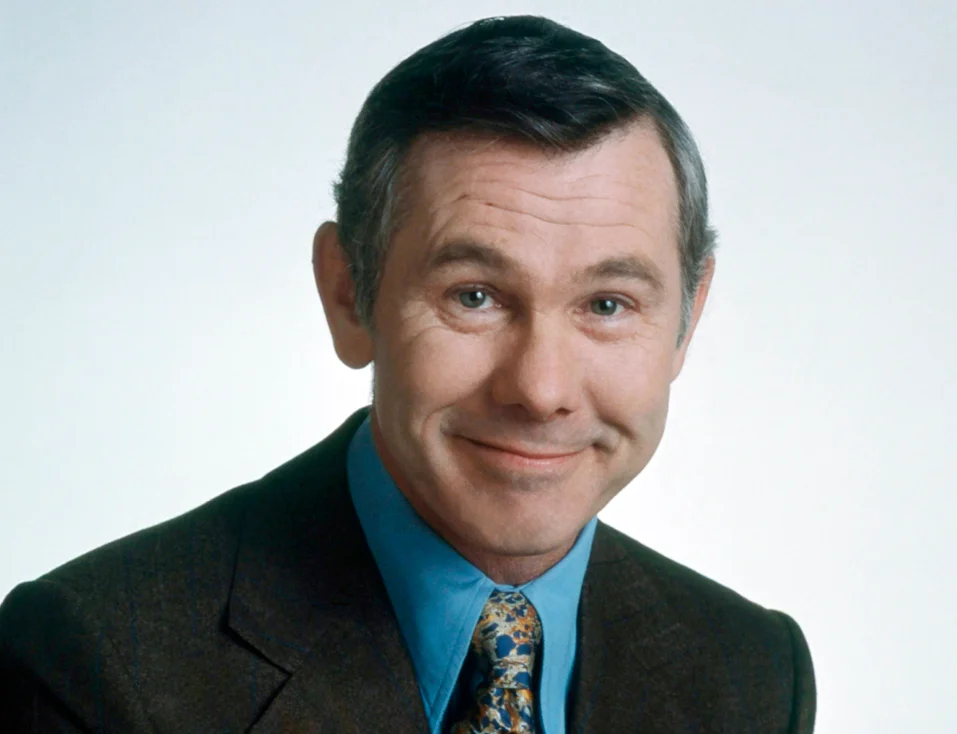
As host of “The Tonight Show” from 1962 to 1992, Johnny Carson wasn’t just a talk show host—he was America’s nightly companion, the last voice millions heard before falling asleep. His influence reached its zenith in the 1970s, when his monologues became a cultural barometer and an appearance on his show could make or break a performer’s career. Unlike many modern hosts, Carson maintained a certain mystery about his private life, yet paradoxically felt more intimate—his raised eyebrow, knowing smirk, and perfectly timed reactions created a sense that viewers were in on the joke with him, sharing private moments rather than watching public performances.
Carson’s greatest gift was his ability to make both guests and viewers feel comfortable, his genuine interest in people balanced with a quick wit that never became mean-spirited. His recurring characters—Carnac the Magnificent, Art Fern, Floyd R. Turbo—became familiar friends welcomed into living rooms with affection, while his annual traditions, particularly his Christmas episodes featuring children, revealed a warmth that connected with audiences beyond the jokes. The famous Carson laugh—a genuine, sometimes silent, shoulder-shaking chuckle—was never forced for the cameras but represented authentic amusement, creating moments of shared joy with viewers that felt like family gatherings rather than broadcast entertainment.
9. Jim Henson
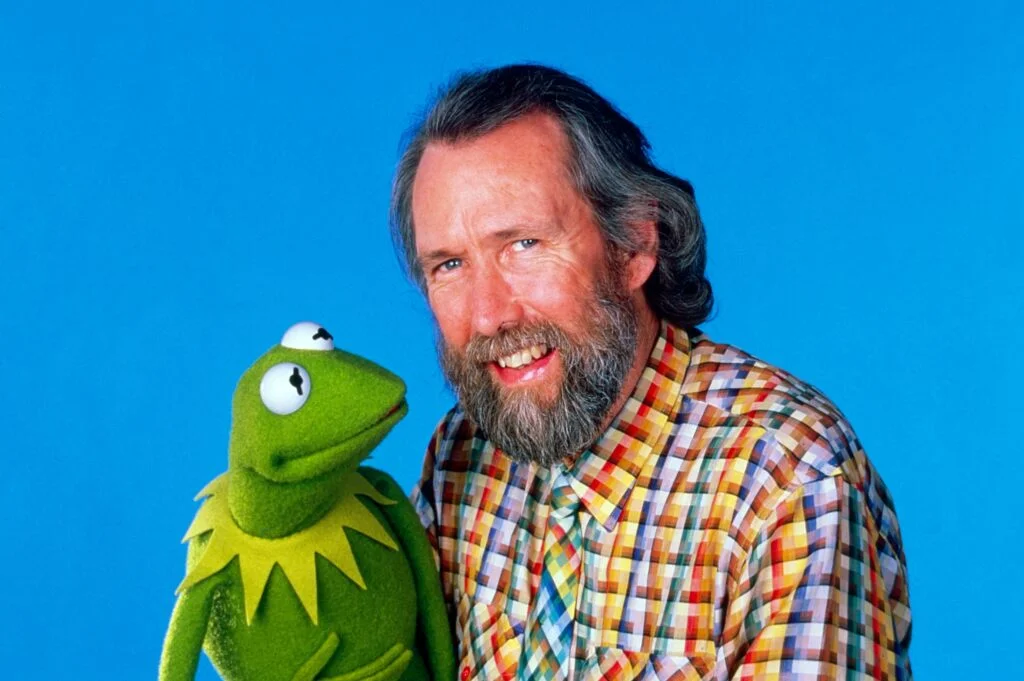
Though we rarely saw his face, Jim Henson’s presence was felt in American homes throughout the 1970s through his groundbreaking work with the Muppets, first on “Sesame Street” (which began in 1969) and later on “The Muppet Show” (1976-1981). Henson’s genius lay in creating characters that appealed simultaneously to children and adults—Kermit the Frog, with his gentle wisdom and exasperated sighs, often seemed to be speaking directly to parents over the heads of the children watching, creating a multi-layered viewing experience that brought families together rather than segregating entertainment by age groups. Through these felt personalities, Henson delivered messages about kindness, acceptance, and creativity that shaped millions of childhoods while entertaining parents with sophisticated humor and cultural references.
What made Henson’s characters feel like family was their consistency and depth—Kermit, Miss Piggy, Fozzie Bear, and the entire Muppet ensemble had distinct personalities, flaws, dreams, and relationships that developed over time, creating a richness rarely seen in children’s entertainment. The Muppets argued, reconciled, supported each other, and pursued their ambitions with a humanity that transcended their puppet nature, often addressing the audience directly to share observations or reactions that made viewers feel included in their world. When Henson died unexpectedly in 1990, the public grief was profound and genuine—not just for a talented performer but for someone whose creative vision had become interwoven with our own family experiences and memories.
10. Carl Sagan
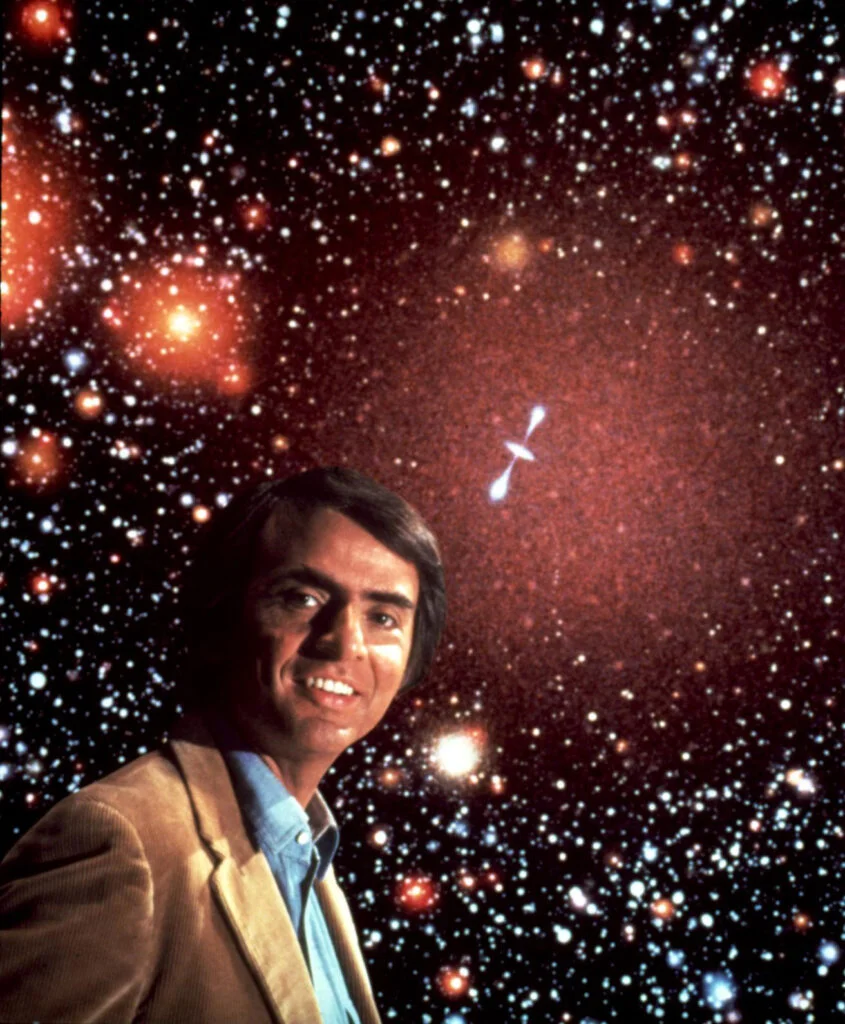
Through the groundbreaking PBS series “Cosmos” (1980) and his numerous appearances on “The Tonight Show” and other programs throughout the 1970s, astronomer Carl Sagan became America’s scientific guide to the universe, making complex concepts accessible without sacrificing accuracy or wonder. His distinctive voice with its rhythmic emphasis (“billions and billions”) and his evident passion for knowledge transformed science from a distant academic pursuit into a thrilling exploration that families could share. Unlike many scientists of his caliber, Sagan prioritized public understanding, believing that scientific literacy wasn’t just for specialists but a birthright of every curious mind.
What made Sagan feel like family was his consistency as a voice of reason and wonder—he never talked down to his audience but invited them to rise to the challenge of understanding, treating viewers as intelligent partners in exploration rather than passive recipients of information. His famous phrase from “Cosmos”—”We are made of star stuff”—connected the scientific reality of our atomic origins to a profound philosophical perspective, exemplifying Sagan’s gift for linking factual knowledge with deeper meaning. Though his career extended well beyond the 1970s, it was during this decade that Sagan established himself as a trusted guide to both the cosmos and our place within it, becoming the scientific uncle who expanded our horizons while keeping us grounded in evidence and critical thinking.
11. Dinah Shore
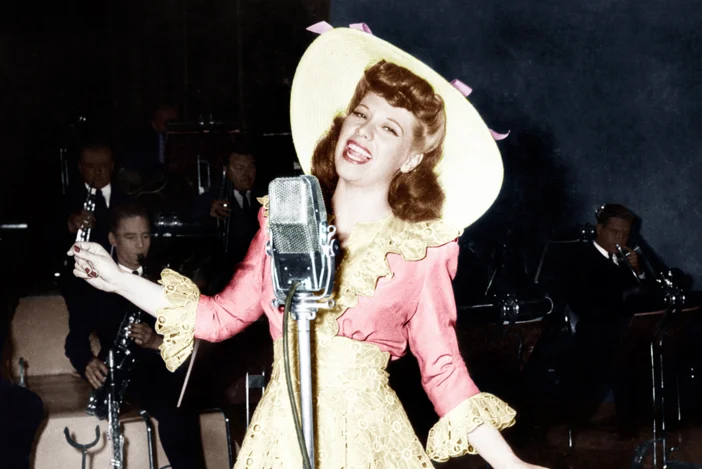
With her signature sign-off—blowing a kiss to the audience and singing “See the U.S.A. in your Chevrolet”—Dinah Shore established herself as one of television’s most genuine personalities, bringing warmth and southern hospitality to daytime television. After successful music and variety shows in earlier decades, Shore found her true niche with “Dinah!” (1974-1980) and “Dinah and Friends” (1979-1980), talk shows that emphasized conversation over confrontation and treated guests as friends visiting her home rather than celebrities promoting projects. Her genuine interest in people created an atmosphere where even the most guarded personalities opened up, resulting in conversations that felt like eavesdropping on intimate gatherings rather than staged interviews.
What made Dinah feel like family was her accessible approach to celebrity—she cooked on air (her “Dinah’s Backyard BBQ” segments were particularly popular), shared personal stories, and treated homemakers with the same respect she showed to famous guests, acknowledging the value of domestic work when many shows were focusing exclusively on women’s changing roles outside the home. Her comfortable on-screen presence and genuine enthusiasm for her guests’ achievements created a parasocial relationship with viewers that many still recall with affection. Unlike hosts who maintained a certain distance or persona, Shore seemed to be essentially the same person on and off camera—a warmth and authenticity that viewers responded to by welcoming her into their homes day after day, year after year.
12. Bob Keeshan as Captain Kangaroo
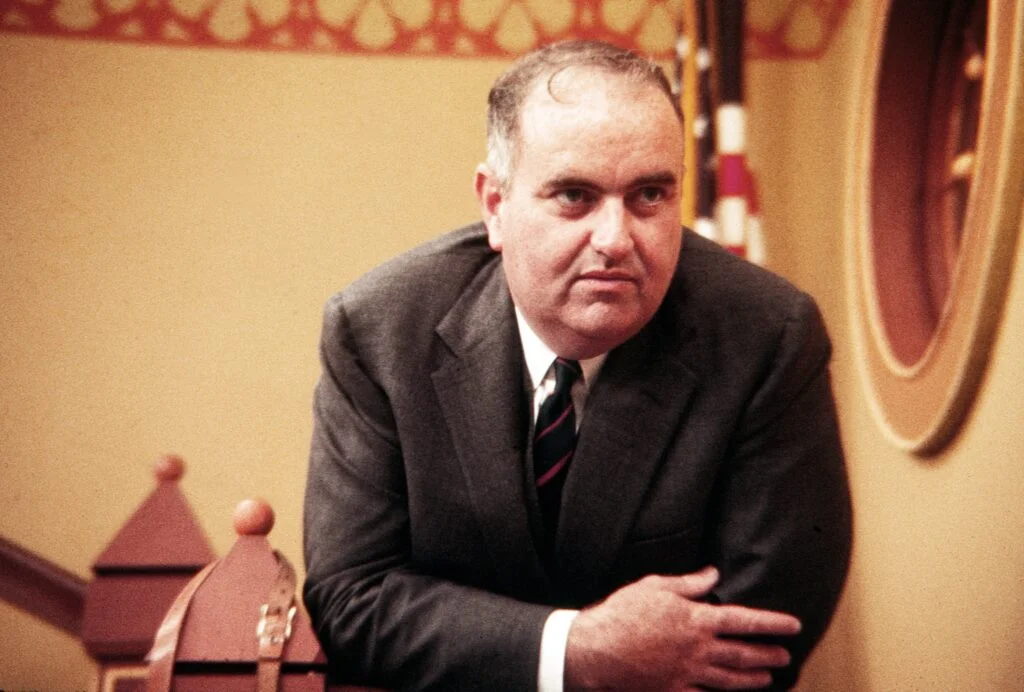
For nearly three decades, beginning in 1955, Bob Keeshan portrayed Captain Kangaroo, the gentle, grandfatherly figure who helped define what children’s television could be—educational without being didactic, entertaining without being frenetic, and consistently kind. With his trademark large pockets (hence “Kangaroo”) and quiet voice, the Captain created an atmosphere of safety and gentle humor, addressing children directly and treating their interests and concerns with genuine respect. Unlike the manic energy that would come to characterize later children’s programming, “Captain Kangaroo” moved at a child’s pace, allowing young viewers to absorb concepts and ideas without overstimulation.
The Captain’s interactions with regular characters—Mr. Green Jeans, Dancing Bear, Bunny Rabbit, and Mr. Moose—created a consistent world that children could return to each morning, providing stability and gentle structure that many parents appreciated. Keeshan, who had previously portrayed Clarabell the Clown on “Howdy Doody,” understood that children’s entertainment didn’t need to be loud or fast-paced to be engaging—a philosophy that put him increasingly at odds with commercial television later in his career but endeared him to generations of families who trusted him with their children’s early viewing experiences. Though many remember specific segments (particularly Mr. Moose’s ping-pong ball pranks), it was the Captain’s consistent kindness and respect for his young audience that made him feel like an extended family member to millions of children who grew up with his gentle guidance.
These television personalities from the 1970s didn’t just entertain us—they helped shape our worldviews, influenced our family conversations, and created shared references that continue to connect us decades later. In an era before social media and 24/7 entertainment options, these familiar faces became genuine presences in our homes, their weekly or daily visits as reliable as family gatherings. While modern celebrities may have larger platforms and more direct ways to communicate with fans, few achieve the depth of connection these television personalities established through years of consistent, authentic engagement with their audiences. They weren’t just people we watched—they were people we knew, trusted, and welcomed into our lives as honorary members of the family.


